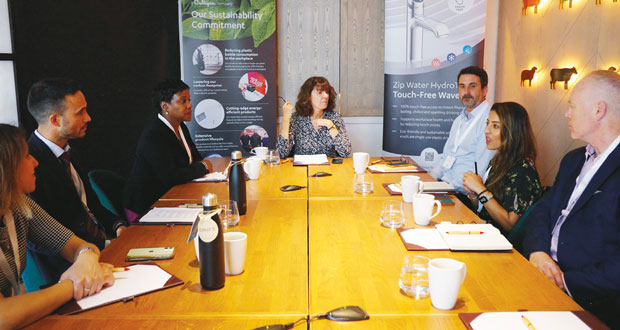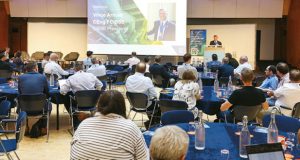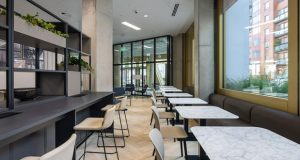FMJ, in conjunction with Zip Water brought together a panel of senior FMs under Chatham House rules to share their expertise in providing sustainable and healthy working environments
• Sara Bean – Editor, FMJ
• Robbie Ferguson – National Sales Manager, Zip
• Daniel Johnson – National HydroCare Manager, Zip
• Ian Baker – Head of Workplace, EMCOR UK
• Simi Gandhi-Whitaker, Strategic Technology Director, Mitie
• Peter Carr – Head of FM, CEG
• Maureen Symester – Head of Facilities, Richmond Pharmacology
• Russell Burnaby – Head of FM, Brent Council
• Steve Harris – Head of FM, London Borough of Camden
• Satinder Kaur – Head of Workplace Development, General Medical Council
The pandemic has changed the way in which people work and live, with research suggesting that those who worked mainly from home adopted less healthy habits, from neglecting to move enough during the day to neglecting their nutrition and hydration. This means for FMs a focus on wellbeing, sustainability and community is more important than ever, but how can they meet these demands while managing the transition from pre-pandemic work habits to a hybrid workforce?
We brought together a group of senior FMs alongside two of Zip Water’s hydration experts to discuss how FMs can devise a Sustainable Health and Wellbeing strategy that meets Environmental, Social, and Governance factors (ESG).
Q: What exactly do we mean by wellbeing at work? How can we define it?
Robbie Ferguson of Zip said that wellbeing describes both physical health and mental health which is why encouraging staff to take regular breaks, including going out for a walk at lunchtime is an important part of any wellbeing strategy. For one of our panellists, their organisation was so focused on preventing the spread of COVID, visitors and staff were subject to lateral flow tests upon entering their building. This causes problems managing facilities, making deliveries and collections in particular difficult to manage.
But as another panellist explained: “You’ve got different ends of the spectrum. If you’d asked two years ago, the definition of wellbeing was making employees productive, but now it’s about keeping them well. The key to wellbeing now is having an offer which entices staff to come back, because if you’ve got an alternative workplace at home you need a pull with wellbeing at the fore.”
It was agreed that an important factor is in figuring out what people want. “It’s not just about getting people back into the workplace, but what they do when they get there. It’s good having collaboration areas, and focused places etc, but is it actually being used in that way? Have you got enough meeting areas, enough private areas, are people just coming in because they want a change from the home office, are they not coming in enough? We need to do the analysis and then do that whole change management piece.”
Q: What are the greatest changes and challenges in the immediate aftermath of the pandemic?
Overcoming ingrained behaviour was mooted as something of an unforeseen issue. “People were told to work from home, so we’re now in the process of figuring out how we engage them back into the building.” It also comes down to the activity that people are doing in the office, as one panellist explained: “It must link back to purpose, and a lot of people question ‘why spend so much time travelling when you can do exactly the same at home?’”
Another challenge is in trying to encourage people not to go back to the way things were before. For instance, people booking a meeting room when it’s not confidential and there are instead a range of collaborative spaces they could choose instead.
According to Zip’s Daniel Johnson, having access to chilled water while ensuring the taps were sanitised was a requirement for clients arranging, “return to work days when the building would go live, so we took a lot of time to work with the customers as top of the list was the provision of food and drink to help entice people back into the building.”





